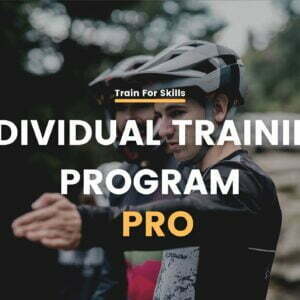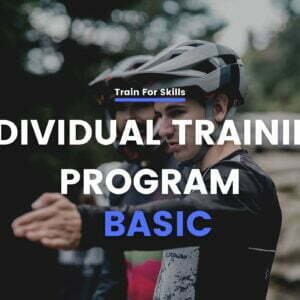Unilateral exercises
Unilateral exercises are all one-sided movements during which only one limb or part of the body is definitely more loaded and muscles of the whole body strive for stabilization. They are an essential element in strength training, sports training and rehabilitation.
Improving the function of stabilizers:
When performing unilateral exercises, the number of support points is often reduced. The single leg deadlift is an example where only one leg is in contact with the ground. This variant, compared to the classic version, engages the muscles of the entire girdle and the muscles stabilizing the pelvis to a much greater extent. Giving the weight to the right hand while performing exercises on the left leg, we additionally increase the tension of stabilizers, thus working on anti-rotational stabilization
Single leg squat with one leg elevated, also known as a Bulgarian squat or RFE Split Squat is an excellent tool to develop strength, but also to improve stability of the knee joint. Because the load is 90% on the front leg it forces the front leg to work hard. The involvement of the VMO (medial vastus medius of the thigh) muscle is much greater than during classic squats, and it is this muscle that “locks” the knee joint and determines its stability. Knee joint injury is an injury that occurs in every sport, so it is very important to strengthen this area.
All other exercises performed with one hand, such as overhead press, rowing, pulling a cable or working on elastic bands require much more concentration and involvement of deep muscles in comparison to classic versions.
Equalizing disproportions and increasing strength
I wanted to separate the two features mentioned above, but when talking about increasing strength level, it is impossible not to mention decreasing disproportions. The simplest example – squat. If you are doing squats with a barbell on your back and you notice that for some time now you have not been able to add kilograms, one of the reasons may be the disproportion in the strength of the lower limbs (of course I’m leaving aside the issues of back strength and rest). By then introducing unilateral exercises into your leg training, you will certainly notice that either of them is weaker. This is precisely the advantage of these exercises. The partial isolation of one limb gives us the opportunity to work on the weak points. Thus, complementing the training with this type of exercises, can give the effect of increased loads during bilateral exercises (bilateral) as just the squat with barbell.
Proprioception
Unilateral movements, especially those in which the number of support points is reduced, require very high concentration and “muscle feeling”. This makes them a great tool for learning to control your body and its orientation in space (proprioception). This is one of the main reasons why they are used in teaching sports technique. Due to the need to use less weight than bilateral exercises, most unilateral movements will be less stressful on the central nervous system (CUN).
Unilateral exercises will be great for the anatomical adaptation phase.
Functionality
This is one of the most important benefits of unilateral exercise. Running, which is an element of almost every sport, jumping, cycling (pedaling) uses by far the most strength of one limb. We don’t run by bouncing off both legs at once. We don’t pedal by pressing two pedals simultaneously. Since these movements are single leg presses, it’s a good idea to train in a similar manner. Exercises, Bulgarian squats, RDLs on one leg, single leg squats can all be helpful.
The situation is similar with the upper limbs. All combat sports, basketball, swimming or athletic competitions use unilateral movements. Therefore, when training upper body strength, Single Arm Landmine Press/DB Press/Med Ball Throw etc. may be a supplement. Thanks to unilateral exercises we are able to reproduce muscle work of a given sport discipline much more accurately in the training room.
Rehabilitation
Unilateral exercises are also a great tool in rehabilitation. When we train one side of the body, the other side is also stimulated. Indirect stimulation of the non-working limb by working the opposite limb improves strength in the injured area. This effect is referred to as cross education and is a neurophysiological phenomenon. The brain pathways used for basic unilateral exercise stimulate the same muscles on the opposite side of the body. The key to using the cross education phenomenon is knowing that it only works the same muscles on the opposite side of the body. For example, straightening the knee in the right leg stimulates the left quadriceps, not the biceps.
Interestingly, cross-education (cross-education) is greatest for lower body muscles and with the use of eccentric contraction (lengthening) of muscles [Manca et al., 2017]. However, concentric (shortening) contractions also work, as do isometric contractions (no change in length), although to a much lesser extent.
Examples of unilateral exercises:
- Single Leg Dumbbell RDL
- Single Leg Squat
- Lunges
- Single Leg Glute Bridge
- Bulgarian (RFE) Squat
- SA DB Press
- Single Arm Landmine Push Press
- Single Arm DB Row
Summary
Unilateral exercises are a very important tool in strength training. Their benefits include;
- improving stabilizer function,
- compensation of strength and muscle imbalances,
- isolation of a single limb,
- less strain on the nervous system,
- rehabilitation of an injured limb,
- possibility of bringing the movement closer to the sports specifics
Remember, however, that the basis for muscle strength training are usually classical bilateral/bilateral exercises. Unilateral movements are most often used as a supplement to training, in rehabilitation, and as an element in sports training.




